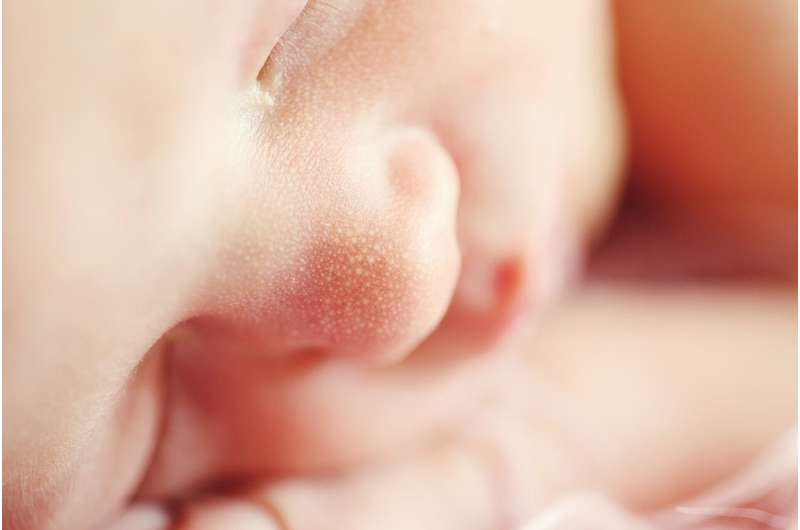
Q: My baby has reflux. How should I put him to sleep?
A: Naturally, you want to do whatever you can to keep your baby safe. And if your baby is one of the many who have reflux ― also called gastroesophageal reflux (GER) ― there are a fair share of myths and misconceptions out there when it comes to sleeping positions.
First, without getting too technical, spit-up is the movement of stomach contents into the esophagus, and sometimes through the mouth and nose. When reflux is associated with other symptoms, or if it persists beyond infancy, it is considered a disease and is known as gastroesophageal reflux disease or GERD.
GER in infants is not considered a disease and does not include a “D.” In fact, GER is considered normal. These infants are known as “happy spitters,” because they are not cranky and do not appear to be in a great deal of pain when spitting up. In fact, your baby may feel better after a good spit-up. Other symptoms of GER include mild feeding problems, such as occasional prolonged feeds or interrupted feeds.
Many of the factors that contribute to GER in infancy are part of typical growth and development, including a short esophagus in newborns that will grow as the baby does, along with a muscle at the bottom that is also relatively short and not as strong as it will be later in life. GER typically starts at 2-3 weeks of age and peaks at 4-5 months in full-term infants.
GER typically gets much better after 6 months once a baby learns to sit up; the esophagus gets longer and the lower esophageal sphincter functions properly.
Though parents are often concerned that their baby may vomit and choke while sleeping on his or her back, it is a total myth. Babies automatically cough up or swallow fluid that they spit up or vomit because of the gag reflex, which naturally prevents choking from happening.
There is no evidence that healthy babies placed on their backs are more likely to have serious or fatal choking episodes than those placed on their stomachs. But there is strong evidence that babies placed on their stomachs are at higher risk for sudden infant death syndrome (SIDS). If your baby falls asleep while riding in his car seat, which often happens, the American Academy of Pediatrics recommends transferring him out of the seat when you reach your destination and placing him on his back in a crib, bassinette, or play yard with a firm, flat mattress, free from soft bedding, including pillows or blankets, toys and bumpers.
Car seats and other sitting devices, like swings or reclined bouncy seats, are not safe sleeping environments; neither are sleep positioners or nests, a mat with raised supports or pillows surrounding it, frequently resembling a raft.
These products are unregulated and there are no safety standards that apply to them. In addition, there is evidence that a semi-inclined position can make a baby’s reflux worse.
There are many gadgets that are marketed for treating reflux. Wedges and sleep positioners are not needed and although these are sometimes marketed to reduce the risk of SIDS, research is lacking.
Reflux will end for most babies. As difficult as it can be, wait it out. Most babies outgrow the symptoms. We know that by 4 months of age, the great majority of babies are spitting up. By 6 months, that dramatically drops off because they’re sitting up on their own.
Source: Read Full Article
